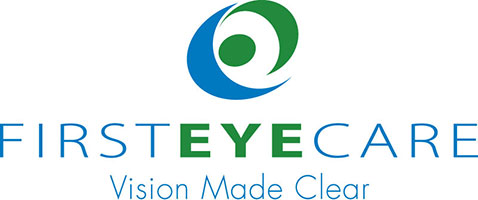When it comes to vision problems refractive errors are some of the most common in the United States. These types of errors occur when the eye is not able to reflect and focus light adequately on the retina. About 40% of Americans require vision prescriptions due to nearsightedness. Farsightedness is much less common and only affects around 5 to 10% of the U.S. population. Regardless of if you have already been diagnosed with one of these refractive errors by your optometrist in Roanoke, it’s quite common for people to become confused between the two vision impairments of farsightedness and nearsightedness.
Nearsightedness (Myopia)
Nearsightedness, in simple terms, means that you are able to see objects that are nearer to you than ones that far away. With this condition when you attempt to look at objects that are far away, they appear blurry. For example, if you are able to read a book that is close to your eyes with ease, but unable to read a sign that is somewhat far away, then you likely are suffering from a degree of Myopia.
This visual impairment occurs when the eyeball is physically too long from the front to the back. It also can occur if the cornea (the cornea covers the front part of the eye) curves at a steep angle. This physical deformity causes the light that enters the eye to be focused on the front of the retina instead of onto the surface (the retina is the tissue that lines the back of the eye and is light-sensitive). Generally, this visual impairment worsens over time, regardless of a prescription. If you have Myopia, you will generally suffer from a few, if not all of the following symptoms:
- Difficulty making out objects that are far away
- Difficulty reading road signs
- Blurred vision
- Finding yourself squinting when trying to focus on far away objects
- Headaches
- Eye strain
- Finding yourself moving closer to objects to see
- Pressure or soreness of the eyes
- Eye fatigue
Farsightedness (Hyperopia)
Farsightedness is the exact opposite of nearsightedness. If you suffer from this condition, then you are able to focus on items that are far away and see them clearly, but, you are not able to focus on objects that are closer to your eyes. For example, you will easily be able to read road signs but have more trouble reading a book that is closer to your face.
This condition is also the opposite of Myopia in that the eyeball is physically too short from the front to the back of the eye, or that the cornea isn’t curved enough, or that the lens sits too far back in the eye. Because of this physical deformity, the light that enters the eye then focuses behind the retina as opposed to on the surface of it. If you have Hyperopia, you will generally suffer from a few if not all of the following symptoms:
- Difficulty seeing objects up close
- Difficult reading up close
- Blurred vision
- Aching of the eyes
- Headaches
- Eyestrain
- Finding yourself furthering items from your face to try and see them
Your best bet for healthy vision and eyes is to regularly visit your optometrist in Keller for an annual to biannual eye exam. This will ensure that your doctor is able to detect any visual conditions at an early stage and potentially prevent further problems.
First Eye Care DFW is an all-around vision center that can meet all of your vision needs. Come visit one of our trusted eye doctors today. If you have any questions or would like to make an appointment head over to our contact page to get in touch.



